What does this numeral 10 represents and why do we have TE10 TE11 and then TE20. Where are the rest?
-
3Can you explain to me why you could not find this explanation: http://www.daenotes.com/electronics/microwave-radar/waveguide-modes-of-signal-propagation It is the 4th link if you Google for "te10 waveguide" !?!? – Bimpelrekkie Nov 09 '16 at 13:48
-
I already read that explanation. But what is the meaning of this 10 in TE10 and where are the rest? – rishabh jain Nov 09 '16 at 14:23
-
2Explain to us how we are supposed to say anything clearer than the link above. If you don't understand that link, you show no sign of understanding anything we can write here. – Sean Houlihane Nov 09 '16 at 14:25
-
1The numbers are just names for the modes. Not all modes can exist and/or are useful so not all are all there. – Bimpelrekkie Nov 09 '16 at 14:42
-
I am sorry i mistook the keyword "figure" as the waveguide's sketch and messed up the whole explanation. – rishabh jain Nov 09 '16 at 17:29
1 Answers
A \$TE_{10}\$ mode has one lobe in the E-field strength pattern in the x direction (the longer transverse direction) and 0 lobes in the y direction.
A \$TE_{11}\$ mode has one lobe in the E-field strength pattern in the x direction and 1 lobe in the y direction.
A \$TE_{21}\$ mode has two lobes in the E-field strength pattern in the x direction and 1 lobe in the y direction.
Etc.
Image source: cst.com
why do we have TE10 TE11 and then TE20. Where are the rest?
Each mode has a cut-off frequency. Below the cut-off frequency, the mode can't propagate (because, in simplified terms, the wavelength is too long to allow fitting so many lobes in the waveguide).
The TE10 mode is the mode with the lowest cut-off frequency, so we normally list it first. (If the waveguide cross-section were square, the TE10 and TE01 modes would have the same cut-off frequency, because of the symmetry between them; which is why we don't normally make square waveguides)
Beyond that, which modes have lower cut-off frequencies depends on the ratio of the dimensions of the waveguide. If the height were much smaller than the width, we could make the TE20, TE30, etc. modes have lower cut-off frequencies than the TE01 mode.
We don't talk about the higher-order modes (like TE63, or whatever) because we usually want only one mode to be used in our waveguide (to minimize dispersion of the signals we are sending). The TE20 and TE11 modes are important because they are typically the first ones that might disturb our model if we try to send too high a frequency along our guide. The TE63 mode should never be excited if we use our waveguide correctly.
- 126,425
- 3
- 159
- 304
